New Staff members and fellows: April - June 2020

Marco Boretto
I am an experimental particle physicist and I defended my PhD thesis at the University of Torino in the beginning of 2020. The PhD was focused on the NA62 data acquisition system and on the study of rare kaon decays. During the PhD I have gained extensive experience in distributed system and multi-threading software. During the fellowship I will work on the upgrade of the NA62 data acquisition system.
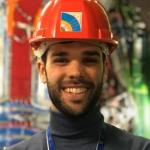
Pau Cutrina Vilalta
Pau Cutrina Vilalta is a software engineer at physics, software & computing CMS group (EP-CMG-CO). He is part of the Site Support team responsible for the data processing software and computing infrastructure of the CMS experiment. In particular, he monitors the health of the distributed computing framework and central services of CMS. His previous research in the Mechanical & Aerospace department at the University of Colorado was focused on the application of machine learning methods to predict yield stress in high entropy alloys as well as the modelization of multi-output models for centrifugal compressors.
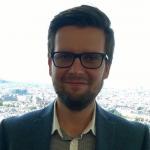
Pawel Klimek
I have recently joined the CERN ATLAS team as a fellow. I am heavily involved in the ATLAS Tile hadronic calorimeter. My current focus is the Tile’s performance, calibration and data preparation. Also, I contribute to the Tile Phase-2 upgrade. Moreover, I am involved in searches for new physics in a Higgs sector. Especially, I contribute to the searches for charged Higgs bosons in a final state containing tau lepton and neutrino using machine learning techniques. Also, I am involved in searches for Higgs boson produced in pairs in a final state containing tau leptons and b-quarks.
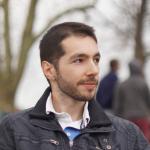
Razvan Lica
My research will be dedicated to nuclear decay spectroscopy studies of exotic ions at the ISOLDE Decay Station within the ISOLDE radioactive ion-beam facility of CERN. The goal of my work is to gain a better understanding of the connection between the underlying nuclear forces and nuclear shell evolution with applications in astrophysics and in the development of nuclear models. I am excited to be part of the CERN family once again and I am looking forward to enriching my career thanks to this unique opportunity.

Giulio Malaguti
I believe I can make an active contribution to the development and support of the group and at the same time further improve my know-how and my knowledge in the electro-mechanical field for the EP-DT-DI. The experiences in which I am most involved are LHCb where I have recently become an expert for the Magnet Control System, CLOUD where I am the responsible of slow control system and COMPASS where I responsible for the logic slow control part of the vacuum system. I am participating also in the Stand-by Duty 24/7 team for LHC magnets and dipoles experiments.
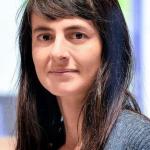
Ljiljana Morvaj
I am a fellow on the ATLAS experiment within the Liquid Argon (LAr) calorimeter group. I am working on the implementation and commissioning of the LAr Phase 1 upgrade. In particular, I am developing the software for the monitoring of the new digital trigger system. Before starting my fellowship, I was a post-doc at Stony Brook University where my main focus was the search for the exotic decays of the Higgs boson. As a PhD student at Nagoya University, I searched for DM candidates in models with extra dimensions. I’m looking forward to further exploring new physics landscape in Run 3.
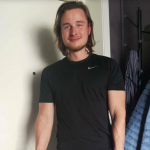
Jarl Nysaeter Pettersen
I am a technician in the TTE programme, and I joined the EP-DT-DI group on June 1st, 2020. Before I came to CERN I worked 5 years as an electrician in the oil & gas sector in Norway. At first I will be working at the CMS TIF, doing an expansion on the distribution monitoring system. And with time I will be joining my colleagues on the large experiments as part of the piquet team. Coming to CERN during the covid-19 pandemic, has made it a bit different than what I expected. But the reception has been very good nonetheless.
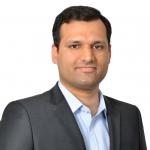
Abhishek Sharma
Whilst on the CERN Doctoral Program, I completed my PhD from the University of Oxford. During these 4 years I contributed within the ATLAS Phase 2 Pixel (ITk) R&D group, where I worked on CMOS sensor radiation hardness research as well as thermal studies of mechanical structures. Over the course of my fellowship, whilst remaining in the same group, my focus will shift towards the assembly, electrical testing and QC of Pixel modules with continued contributions towards CMOS sensor research. My interests lie in instrumentation, applied physics and automation.
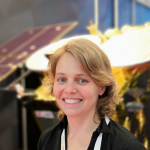
Kirsty Veale
I am a Mechanical Engineer and have recently joined EP-DT as a Senior Fellow. I will be working with the Project Engineer for the new ATLAS Inner Tracker planned for the Phase-II upgrade during LS3. Before taking on the fellowship position, I was working on the decommissioning plan for the ATLAS Inner Detector. The resultant tool developed during the decommissioning panning makes use of VR and a motion capture system to generate a more realistic estimation of the time spent within controlled radiation environments and the resultant accumulated dose. I am also completing my PhD in aerospace structural modelling. I am looking forward to being a part of such an amazing collaborative effort for the envisaged upgrade of the ATLAS Detector.

Chaowaroj Wanotayaroj
I am working on the FPGA-based system testing and emulation of the next generation high speed link. This project is a part of the R&D programme for future experiment. I join Eduardo Mendes and Sophie Baron in the EP-ESE group, Back-end section. We are evaluating and prototyping components and systems which can reach the rate of 56 Gbps using Pulse-Amplitude Modulation 4-Level (PAM4) technique, which is four times faster than the ones used in the current HL-LHC project.
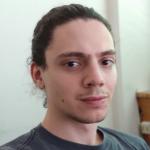
Angelos Zografos
I am an electrical and computer engineer and I came originally at CERN in March 2019 as a technical student, to work in EP-ESE-FE section and specifically in the context of the Phase-2 CMS tracker upgrade. I continue my work in the same team and for the same project, now as a fellow. The most significant part of my work involves the development of electronics and test systems for them, with an extra focus on the development and commissioning of a production scale circuit test system.
